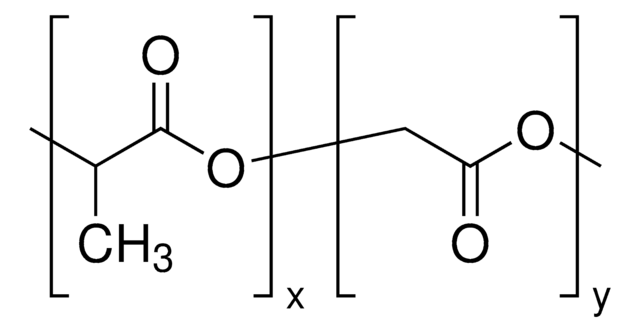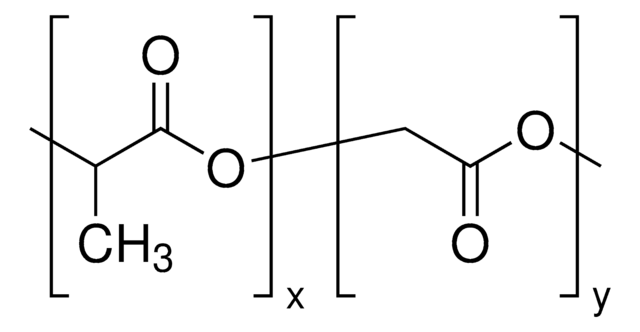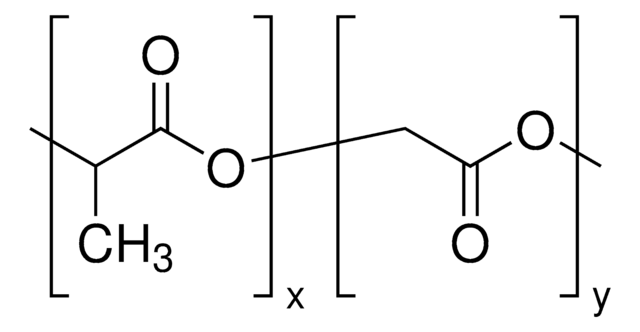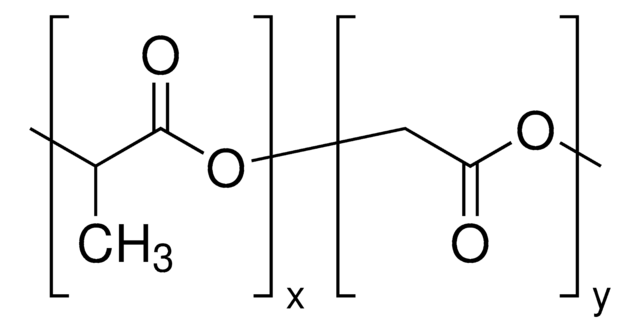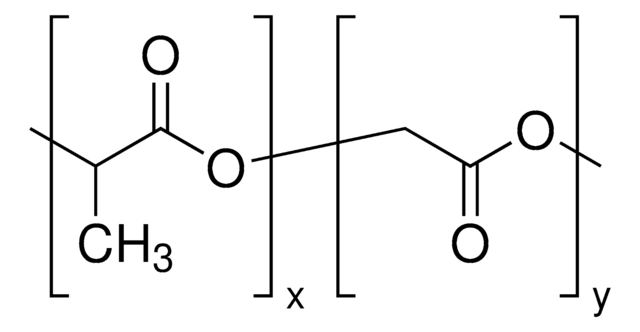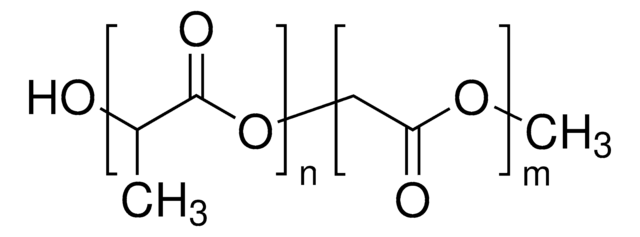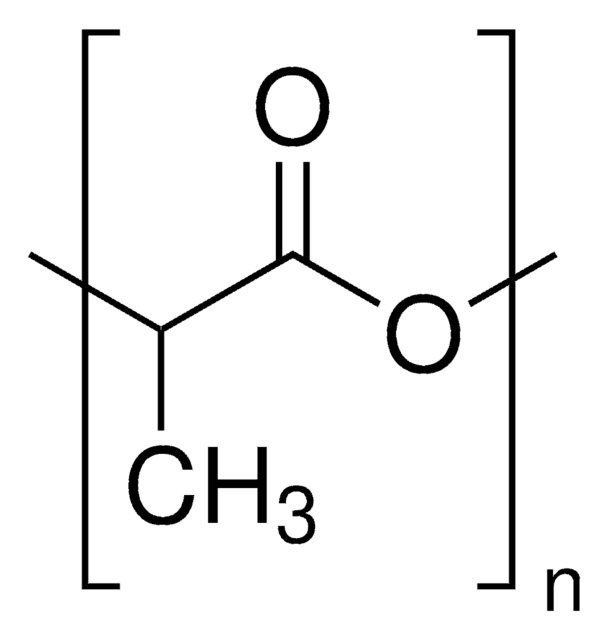739944
Resomer® RG 504, Poly(D,L-lactide-co-glycolide)
lactide:glycolide 50:50, ester terminated, Mw 38,000-54,000
Synonym(s):
PLGA
About This Item
Recommended Products
Quality Level
form
amorphous
feed ratio
lactide:glycolide 50:50
mol wt
Mw 38,000-54,000
degradation timeframe
<3 months
viscosity
0.45-0.60 dL/g, 0.1 % (w/v) in chloroform(25 °C, Ubbelohde) (size 0c glass capillary viscometer)
transition temp
Tg 46-50 °C
storage temp.
2-8°C
SMILES string
O2C(C(=O)OC(C2=O)C)C.O1CC(=O)OCC1=O
InChI
1S/C6H8O4.C4H4O4/c1-3-5(7)10-4(2)6(8)9-3;5-3-1-7-4(6)2-8-3/h3-4H,1-2H3;1-2H2
InChI key
LCSKNASZPVZHEG-UHFFFAOYSA-N
Related Categories
Application
Poly(D, L-lactide-co-glycolide)microspheres can be used to fabricate a hemostatic delivery device forthrombin.
Features and Benefits
Legal Information
Storage Class Code
11 - Combustible Solids
WGK
WGK 3
Flash Point(F)
Not applicable
Flash Point(C)
Not applicable
Choose from one of the most recent versions:
Already Own This Product?
Find documentation for the products that you have recently purchased in the Document Library.
Customers Also Viewed
Articles
Interest in utilizing biodegradable polymers for biomedical applications has grown since the 1960s.
The world of commercial biomaterials has stagnated over the past 30 years as few materials have successfully transitioned from the bench to clinical use. Synthetic aliphatic polyesters have continued to dominate the field of resorbable biomaterials due to their long history and track record of approval with the U.S. Food and Drug Administration (FDA).
Aliphatic polyesters such as polylactide, poly(lactide-co-glycolide) and polycaprolactone, as well as their copolymers, represent a diverse family of synthetic biodegradable polymers that have been widely explored for medical uses and are commercially available.
Aliphatic polyesters such as polylactide, poly(lactide-co-glycolide) and polycaprolactone, as well as their copolymers, represent a diverse family of synthetic biodegradable polymers that have been widely explored for medical uses and are commercially available.
Global Trade Item Number
| SKU | GTIN |
|---|---|
| 739944-1G | 4061832884158 |
| 739944-5G | 4061832884165 |
Our team of scientists has experience in all areas of research including Life Science, Material Science, Chemical Synthesis, Chromatography, Analytical and many others.
Contact Technical Service